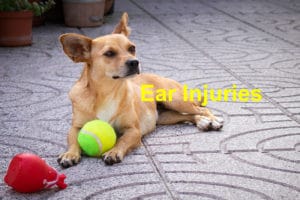The innate curiosity and love of playing makes dogs more vulnerable to various scrapes and injuries. Dog eye injury is quite common and it varies in severity. Nevertheless, you should seek immediate attention from your vet once you notice this type of injury because eye injuries may result in blindness or permanent scarring.
Symptoms of dog eye injury
- Rapid blinking
- General discomfort
- Bloodshot eyes
- Excessive tearing
- Distorted pupil
- Eye discharge
- Visible foreign objects in the eye
- Squinting
- Change in dog eye color
Causes of dog eye injury
There are numerous causes of dog eye injuries, including the following notable ones:
- Vegetation, like digging in heavy brush
- Playing or fighting with other pets, like cats
- Dangerous projectiles like fireworks
- Pre-existing eye deformities
Diagnosing dog eye injury
To help your vet make the best diagnosis, ensure you provide them a comprehensive report about when the dog eye symptoms began. Diagnosis will help discover the causes and seriousness of the eye injury. Likewise, if your dog has a visible wound or foreign object, then diagnosis will be relatively straightforward. The dog’s pupils will also be tested for symmetry, shape, light reflexes and size.
Treatment of dog eye injury
The exact treatment will vary based on the nature and type of eye injury. Simple eye wounds involving the sclera or cornea will often require using prescription antibiotics, atropine eye drops and the Elizabethan collar. If your dog has more complex and severe wounds, like a damaged iris or lens, then they may require surgery to repair the eyes and restore optimal functioning.
Recovery from dog eye injury
In general, the recovery time will depend on the seriousness and type of eye injury. It is recommended to frequently and closely track your dog’s injury during the recovery process. For simple eye wounds, monitor daily and take note of differences in the symptoms shown above. Contact your vet if you notice any negative symptoms or when the wound doesn’t appear to start healing. For dogs recovering from surgery, adhere to the vet’s care instructions to monitor progress.
Remember that deeper eye injury have a greater likelihood of developing into total or partial vision loss. If your precious pet suffers total or partial vision loss, then you both need to start learning how to adapt by making the necessary environmental and activity changes. Nevertheless, most dogs will often recover successfully from their eye injuries. Ensure you keep your pets safely away from possible causes of eye irritation or injury.
References: PetMD, SprucePets, WagWalking





